Fought at the towns of Lexington and Concord in Middlesex County, Massachusetts, the battles of Lexington and Concord remain highly significant historic events for being the first military engagements of the American Revolutionary War. There are many famous events that took place during the course of the battles like Paul Revere’s ride and the first shot which was ‘heard around the world’. Here are 10 interesting facts about the causes, events, contribution of minutemen, casualties and result of the battles.
#1 THE INTOLERABLE ACTS WERE A MAJOR CAUSE FOR THE BATTLES
In response to the Boston Tea Party, during which in defiance of the Tea Act of 1773 the Massachusetts colonists destroyed an entire shipment of tea sent by the British, the British Parliament enforced a number of laws to punish Massachusetts so that other colonies wouldn’t dare to carry out such acts of defiance. The colonists responded to what they termed the Intolerable Acts by forming a rebel government known as the Massachusetts Provincial Congress and called for local militias to train for possible hostilities. In February 1775, the British government declared Massachusetts to be in a state of rebellion.
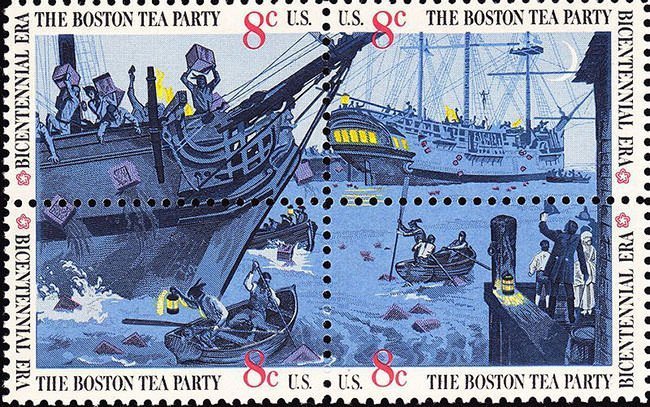
#2 THE BATTLES WERE FOUGHT FOR WEAPONS AND AMMUNITION HELD AT CONCORD
The advent of American Revolution split the people in the American colonies into two groups – the Loyalists, who remained loyal to the British Crown; and the Patriots, who violently rebelled against British control in America. On April 14, 1775, General Thomas Gage, the military governor of Massachusetts, was told to take action to disarm the patriots and to imprison their leaders. He decided to send a force to seize the weapons and ammunition held by the Provincial Congress in the armory at Concord, some 15 miles from Boston.
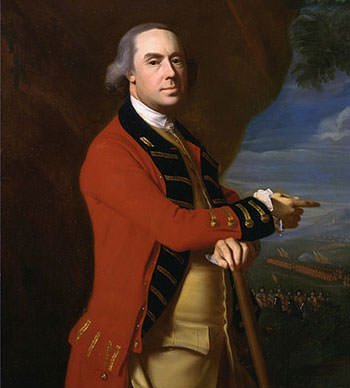
#3 PAUL REVERE’S RIDE WARNED THE PATRIOTS OF BRITISH MOVEMENT
On April 7, 1775, Dr Joseph Warren, an American physician, sent Paul Revere, a Boston silversmith, to warn the Massachusetts Provincial Congress of British army movement in Boston leading to Concord residents moving the military supplies out of town. On the night of April 18, 1775, Paul Revere, along with William Dawes, was again sent to warn the patriots of the British expedition. Revere set forth on his horse, in what is known as the “Midnight Ride”, warning patriots along the way, many of whom set out on horseback to deliver warnings of their own. An 1861 poem by Henry Longfellow on Revere’s contribution titled Paul Revere’s Ride created the national legend of Paul Revere.

#4 THE BRITISH COMMANDER DURING THE BATTLES WAS COLONEL FRANCIS SMITH
General Gage gave orders for an expedition under the overall command of Lieutenant Colonel Francis Smith to march to Concord to seize and destroy all Military stores present there. Major John Pitcairn was to command 10 elite light infantry companies while Lieutenant Colonel Benjamin Bernard commanded 11 grenadier companies. En route to Concord, 700 men under Pitcairn, who were ordered to move ahead, entered Lexington at sunrise on April 19, 1775. They were met by around 80 Lexington militiamen under Captain John Parker, a veteran of the French and Indian War.
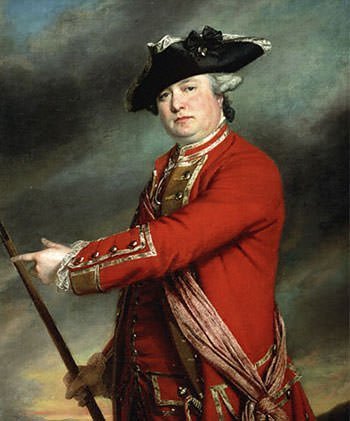
#5 EIGHT AMERICANS WERE KILLED IN THE BATTLE AT LEXINGTON
Captain Parker was aware that he was outnumbered and outmatched. He didn’t want to sacrifice his men for no purpose. So he positioned his men such that they didn’t block the British troops and told them to not fire unless fired upon. A British officer rode forward, waving his sword and called for the assembled militia to disperse leading to disorder and yelling. Though Parker and Pitcairn ordered their men to hold fire, a shot was fired leading to a skirmish during which 18 Americans were hit, 8 fatally, and the militia dispersed. Only one British soldier was wounded. It is not known who fired the first shot.
#6 NORTH BRIDGE SAW THE FIRST INSTANCE OF AMERICANS FIRING TO DEADLY EFFECT ON THE BRITISH
When British troops arrived at Concord, Lieutenant Colonel Smith ordered them to search for American military weapons and ammunition but most of the military supplies had been hidden or destroyed before their arrival. A British company of around 90 men under Captain Walter Laurie was confronted by around 400 American patriots at Concord’s North Bridge. A brief exchange of fire ensued which saw the first instance of Americans firing to deadly effect on British regulars, who were forced to withdraw. Famous American poet Ralph Waldo Emerson called the first shot of this skirmish the “shot heard round the world” in his 1837 poem “Concord Hymn”.
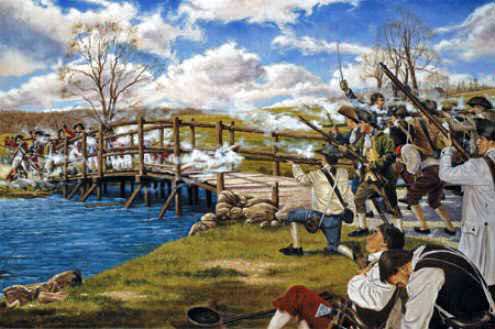
#7 AMERICANS INFLICTED DAMAGE ON THE BRITISH DURING THEIR MARCH BACK TO BOSTON
After the search in Concord was done, the British regulars reassembled to return. No other incident of fighting took place at Concord. However the march back to Boston proved to be extremely difficult for the British. They were fired upon continuously from hidden positions by Americans, whose numbers kept enhancing as more militiamen kept arriving from neighboring towns. Smith’s men were finally rescued by reinforcements under Brigadier General Hugh Percy. During the course of the battles, the British suffered 273 casualties to America’s 95.
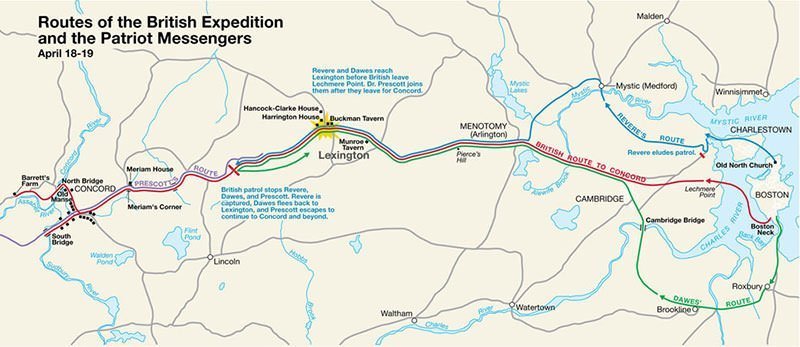
#8 THE BATTLES WERE FOLLOWED BY THE SIEGE OF BOSTON
As only a few weapons could be seized by the British and as they suffered more casualties, the Battles of Lexington and Concord are considered a success for the American patriots. The militia from surrounding Massachusetts communities, which accumulated during the battles, blocked land access to Boston the following day beginning the Siege of Boston. The Continental Congress formed the Continental Army from the militia, with George Washington as its Commander in Chief. After eleven months of the siege, the British were forced to abandon Boston and sailed to Nova Scotia.
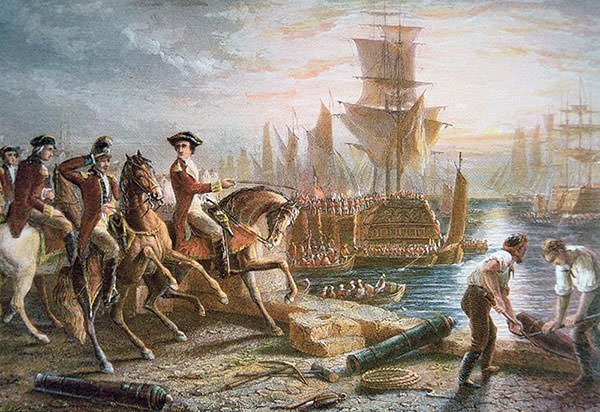
#9 MINUTEMEN ARE MOST FAMOUS FOR THEIR CONTRIBUTION IN THE BATTLES
Minutemen were private colonists who independently organized to form well-prepared militia companies self-trained in weaponry, tactics and military strategies. Being highly mobile, they proved useful in responding immediately to war threats. As they were known to be ready in a minute’s notice, they were called minutemen. Minutemen formed a large percentage of men who fought for America during the Battles of Lexington and Concord. Famous American sculptor Daniel Chester French produced one of his best-known statues, the Concord Minute Man of 1775, in commemoration of the centenary of the battles. The Minute Man statue is still the symbol of the National Guard of U.S.
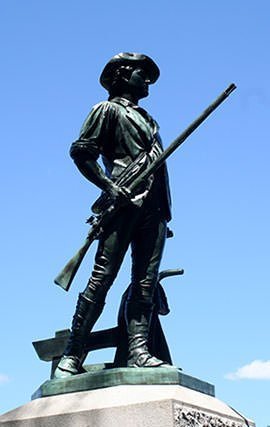
#10 THE BATTLES ARE CONSIDERED IMPORTANT HISTORIC EVENTS
Being the first military engagements of the American Revolutionary War, the Battles of Lexington and Concord remain highly significant historic events. Patriots’ Day is celebrated annually in Massachusetts to commemorate their anniversary. The site of the battle in Lexington is now known as the Lexington Battle Green and is a National Historic Landmark. The land surrounding the North Bridge in Concord is now part of the Minute Man National Historical Park. In April 1925 the United States Post Office issued three stamps commemorating the 150th anniversary of the battles.

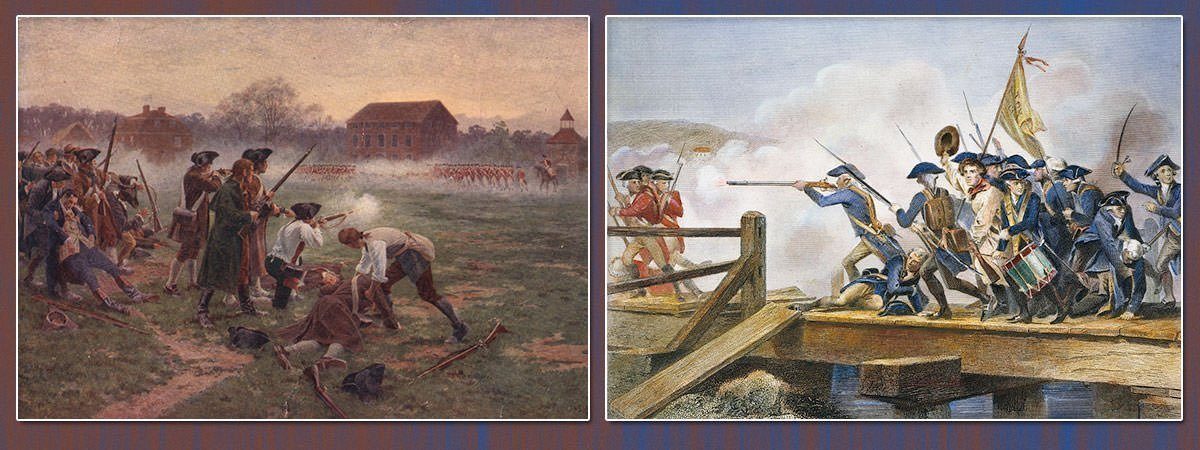
Also, here are some facts
1. Some famous events took place at Lexington and Concord
2. Paul Revere never shouted the legendary phrase later attributed to him (“The British are coming!”)
3. The Americans won the battles of Lexington and Concord
4. Americans at that time still considered themselves British
5. The battle was the first Military engagements of the Revolutionary War.